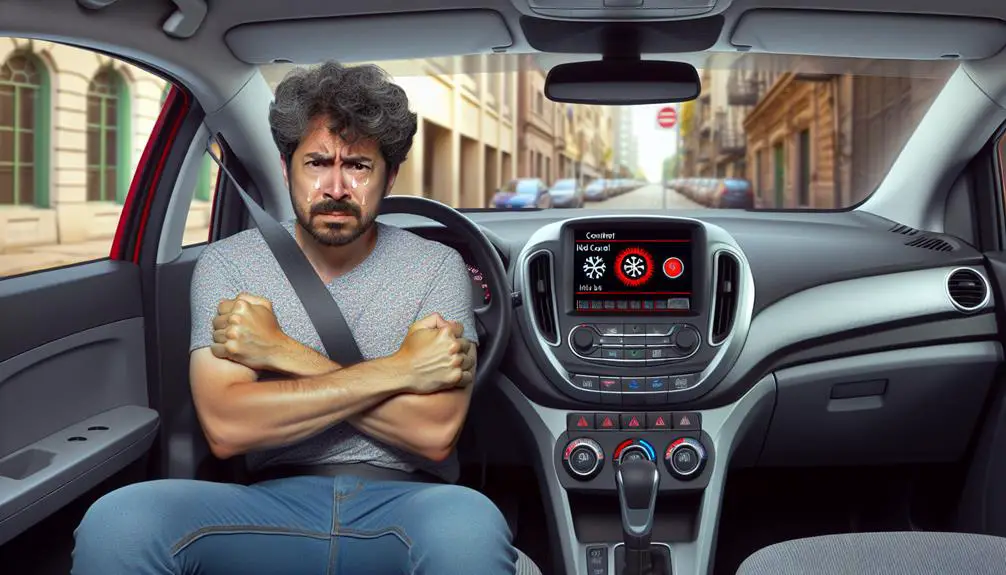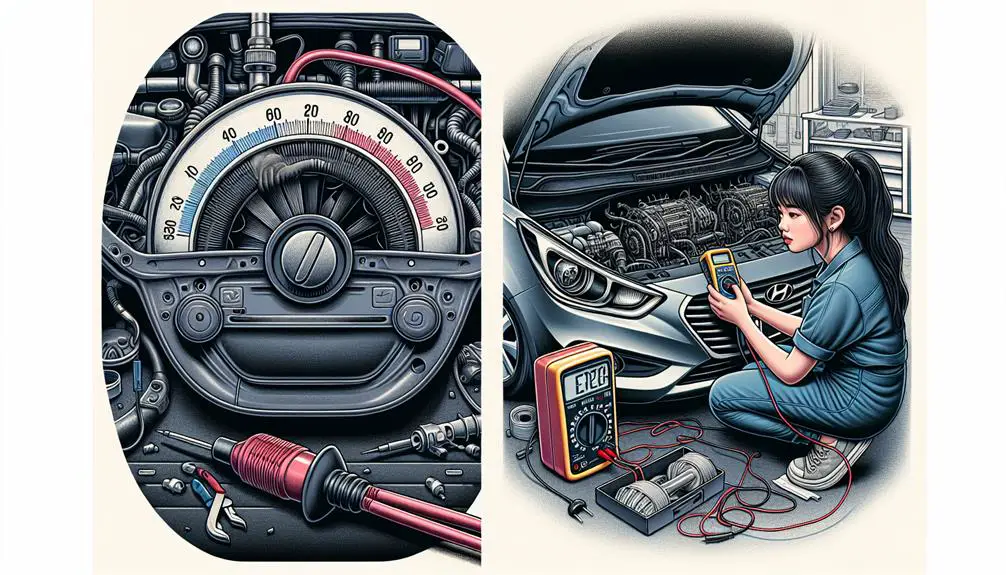If your Hyundai Accent's blower motor is malfunctioning, there are a few steps you can take to diagnose and potentially repair the issue. Firstly, check the fuse connected to the blower motor to see if it has blown. If the fuse is intact, the next step is to inspect the blower motor resistor, which is often the culprit for blower motor problems. Finally, if these components are in working order, the blower motor itself may need to be replaced. It's recommended to consult a professional mechanic for further assistance if needed.
Steps to Diagnose and Potentially Repair a Hyundai Accent Blower Motor Issue:
- Check the fuse connected to the blower motor.
- Inspect the blower motor resistor for any signs of damage.
- If the resistor is functioning properly, consider replacing the blower motor itself.
Remember to disconnect the car battery before attempting any repairs to avoid electrical hazards. If you're unsure about how to proceed, it's best to seek help from a qualified mechanic to ensure the issue is resolved safely and effectively.
Identifying the Symptoms

When your Hyundai Accent's blower motor stops working, you'll likely notice a few primary symptoms, such as a lack of airflow from the vents or unusual noises when you attempt to use the heater or air conditioner. These signs are your initial clue that something's amiss with your vehicle's comfort control system. You might additionally find that the fan operates inconsistently, working at some speeds but not at others, or it mightn't work at all, leaving you with no control over the cabin's temperature.
Another symptom you're likely to encounter is a difference in the air quality inside your car. If the blower motor is failing but still somewhat operational, it mightn't filter the air as efficiently, leading to a stuffier cabin. This is as the motor's inability to circulate air properly prevents it from pushing air through the car's cabin filter, which is designed to clean the air before it enters the interior.
You might additionally notice that the defrosting function isn't working as it should. Without a functioning blower motor, your car's windshield and windows may remain foggy or icy, in spite of setting the defrost mode. This is a clear sign that the blower motor isn't able to push air through the defrost vents to clear the glass.
Recognizing these symptoms early on can save you from discomfort, especially during extreme weather conditions. It's crucial to pay attention to these indicators as they can help you diagnose the issue before it leads to more significant problems or a complete system failure.
Common Causes Explained
Figuring out why your Hyundai Accent's blower motor has stopped working involves examining some common causes. The blower motor is essential for circulating air through your car's HVAC system, and when it fails, you're left with uncomfortable drives, especially in extreme weather. Let's explore some of the reasons why your blower motor might be on the fritz.
To begin with, a blown fuse is one of the simplest yet most common culprits. Your car's electrical system is designed to protect itself, and a surge can cause the blower motor's fuse to blow, halting operation. Checking and replacing a blown fuse might just solve your problem.
Another frequent issue is a faulty blower motor resistor. This component controls the speed of the blower motor. If it fails, the motor may not work at all or only work at a single speed, regardless of the setting.
Lastly, the blower motor itself could be the problem. Over time, motors can wear out or fail because of debris buildup, electrical faults, or simply the age of the vehicle. A malfunctioning blower motor won't be able to push air through the vents, leading to no airflow in the cabin.
- Blown Fuse: Simple yet common, a blown fuse can halt your blower motor's operation.
- Faulty Blower Motor Resistor: Responsible for controlling speed, its failure can cause speed issues or total non-operation.
- Worn Out Blower Motor: Age or debris buildup can lead to a failing blower motor, resulting in no airflow.
Comprehending these common causes can help you identify why your Hyundai Accent's blower motor isn't working, setting the stage for troubleshooting or professional repair.
Troubleshooting Steps

First off, don't overlook the blower motor resistor. This component controls the speed of the blower motor. If it fails, your blower motor may not work at all or only work on one speed. Accessing the resistor usually involves removing the glove box or a panel under the dashboard. If it looks burnt or damaged, it's time for a replacement.
Next, check your car's fuse box. It's often a simple issue where a fuse related to the HVAC system has blown. You'll find the fuse box diagram in your owner's manual; locate the fuse for the blower motor, remove it, and inspect it. If it's blown, replacing it might just do the trick.
Another check involves the blower motor itself. Sometimes, debris or a foreign object might block the blower motor wheel, preventing it from spinning. You'll have to locate the blower motor under the dashboard, usually on the passenger side, and check if it's obstructed. If it's clear but still doesn't work, give it a gentle tap. If it springs to life, the motor's likely on its way out but temporarily revived.
Lastly, don't forget to inspect the control switch on your dashboard. If it feels loose or unresponsive, the issue might be there rather than with the motor.
These steps can save you time and money, pinpointing the issue before deciding on the next steps for repair or replacement.
Repair and Replacement Tips
If you've pinpointed the issue with your Hyundai Accent's blower motor, it's time to tackle repair or replacement. Whether you're a seasoned DIY mechanic or a newbie, there are a few critical steps you'll need to follow to make sure the job goes smoothly. Remember, safety first – disconnect the battery before you start to avoid any electrical mishaps.
To start, you'll need to locate the blower motor. In most Hyundai Accents, it's usually found under the glove box or behind the dashboard. You might need to remove some panels or the glove box itself to get access. Once you've located the blower motor, check its condition. If it's visibly damaged or if the connections are worn out, replacement might be your best bet.
Here are three key tips to keep in mind:
- Check the Blower Motor Resistor: Before you replace the motor, make sure that the resistor isn't the issue. A faulty resistor can cause the blower motor to stop working correctly.
- Use the Right Tools: You'll likely need a screwdriver, a ratchet set, and possibly pliers. Make sure you have the right tools on hand before you start.
- Seal Everything Properly: After replacing the blower motor or making any repairs, ensure everything is sealed and put back together properly. Loose connections or improperly seated panels can lead to additional problems.
Replacing or repairing your Hyundai Accent's blower motor can seem challenging, but with the right approach and a bit of patience, you can get your car's HVAC system back in top shape.
Preventive Maintenance Advice

After addressing repairs or replacements, it's equally important to focus on preventive maintenance to make sure your Hyundai Accent's blower motor remains in top condition. You've got to keep an eye on a few things regularly to avoid future issues. Here's how you can do it.
First off, regularly check the blower motor's fuse. If it's blown, your motor won't work. Replacing a fuse is simple and inexpensive, so make it a habit to check this before diving into more complex troubleshooting.
Next, keep the air filters clean. Clogged filters can restrict airflow, putting unnecessary strain on your blower motor. Make it a point to inspect and replace your cabin air filter as recommended by your vehicle's maintenance schedule, usually once a year or every 12,000 to 15,000 miles. This small step can significantly prolong the life of your blower motor.
Lastly, listen for unusual noises coming from the blower motor. Any rattling or buzzing can indicate debris in the blower fan or issues with the motor itself. Addressing these sounds promptly can prevent more severe damage.
Firstly, consider having an expert inspect the blower motor and its associated components during your regular vehicle service. They can spot potential problems that you might miss and suggest necessary preventative measures.
Conclusion
You've now learned how to pinpoint when your Hyundai Accent's blower motor isn't working, understood the common causes, and mastered troubleshooting steps.
Armed with repair and replacement tips, you're well-equipped to fix the issue. Don't forget to follow the preventive maintenance advice to avoid future problems.
Remember, keeping your car in top shape ensures a comfortable ride and extends its lifespan. So, take action today and enjoy a smoother, more reliable driving experience in your Hyundai Accent.